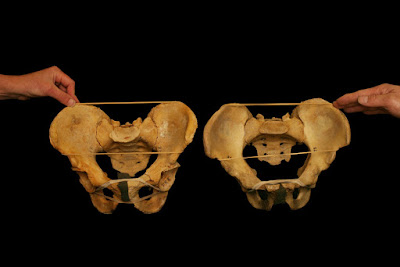Hope you enjoy!
Books
- Sleep - Nick Littlehale (3.5/5)
- Extreme Ownership - Jocko Willink (5/5)
- Ego Is The Eneemy - Ryan Williams (4.5/5)
- Obstacle Is The Way - Ryan Williams (4/5)
- Grit - Angela Duckworth (3.5/5)
- Legacy - James Kerr (4/5)
- Start With Why - Simon Sinek (3.5/5)
- Leaders Eat Last - Simon Sinek (4/5)
- Essentialism - Greg McKeown (4.5/5)
- The Power of Habit - Charles Duhigg (3/5)
- Quiet: The Power of Introverts - Susan Cain (5/5)
- Generation IY - Tim Elmore (5/5)
- Outliers - Malcolm Gladwell (3.5/5)
- A Guide To Better Movement - Todd Hargrove (4/5)
- Steal Like An Artist - Austin Kleon (3.5/5)
- Show Your Work - Austin Kleon (3/5)
- Mindset - Carol Dweck (3.5/5)
- The Champions Mind - Jim Afremow (5/5)
- The 4 Hour Work Week - (1.5/5)
- Mastery - Robert Green (4/5)
- Antifragile - Nassim Taleb (4.5/5)
- CEO Strength Coach - Ron McKeefery (3.5/5)
- Strength Training and Coordination - Frans Bosch
Planned For 2017
I have the following books laying around and haven't gotten around to them yet or they are on my Amazon wishlist.
- So Good They Can't Ignore You - Cal Newport
- Contagious - Jonah Berger
- The Art of War - Sun Tzu
- The Hedgehog and the Fox - Isiah Berlin
- Flow - Mihaly Csikszenentmihalyi
- Everytime I Find Meaning In My Life, They Change It - Daniel Klein
- Rework - Jason Fried
- Why Kids Hate School - Daniel Willingham
- How Children Succeed - Paul Tough
- Most Likely To Succeed - Tony Wagner
- The Champions Comeback - Jim Afremow
- 5 People You Meet In Heaven - Mitch Albom
- 5 Love Languages - Gary Chapman
- The Brain Always Wins - John Sullivan
- How To Support A Champion - Steve Ingham
- Mechanics of Sprinting and Hurdling - Ralph Mann
- What We Need Is Speed - Henk Kraajenhof
- 7 Key To Being A Great Coach - Allistar McCaw
- 16 Things Great Teams Do Differently - Don Yaeger
Podcasts
- Elite Performance Podcast - Us at BBA! (Selfish Plug :)
- Perception & Action Podcast - Rob Gray
- The EntrelLeadership Podcast - Ken Coleman
- Historic Performance Podcast - James Darly
- Ted Radio Hour
- Tell Me Something I Don't Know - Stephen Dubner
Top Research
- Van Hooren, B., & Bosch, F. (2016). Influence of Muscle Slack on High-Intensity Sport Performance: A Review. Strength & Conditioning Journal, 38(5), 75-87.
- Nimphius, S., Callaghan, S. J., Sptieri, T., & Lockie, R. G. (2016). Change of direction deficit: A more isolated measure of change of direction performance than total 505 time. J. Strength Cond. Res.
- Rumpf, M. C., Lockie, R. G., Cronin, J. B., & Jalilvand, F. (2016). Effect of Different Sprint Training Methods on Sprint Performance Over Various Distances: A Brief Review. The Journal of Strength & Conditioning Research, 30(6), 1767-1785.
- Petrakos, G., Morin, J. B., & Egan, B. (2016). Resisted Sled Sprint Training to Improve Sprint Performance: A Systematic Review. Sports Medicine, 46(3), 381-400.
- Morin, J. B., & Samozino, P. (2016). Interpreting Power-Force-Velocity Profiles for Individualized and Specific Training. International Journal of Sports Physiology & Performance, 11(2).
- Gabbett, T. J. (2016). The training—injury prevention paradox: should athletes be training smarter and harder?. British journal of sports medicine,50(5), 273-280.
- Rhea, M. R., Kenn, J. G., Peterson, M. D., Massey, D., Simão, R., Marin, P. J., ... & Krein, D. (2016). Joint-Angle Specific Strength Adaptations Influence Improvements in Power in Highly Trained Athletes. Human Movement, 17(1), 43-49.
- de Hoyo, M., Sañudo, B., Carrasco, L., Mateo-Cortes, J., Domínguez-Cobo, S., Fernandes, O., ... & Gonzalo-Skok, O. (2016). Effects of 10-week eccentric overload training on kinetic parameters during change of direction in football players. Journal of sports sciences, 34(14), 1380-1387.
- de Hoyo, M., Gonzalo-Skok, O., Sañudo, B., Carrascal, C., Plaza-Armas, J. R., Camacho-Candil, F., & Otero-Esquina, C. (2016). Comparative Effects of In-Season Full-Back Squat, Resisted Sprint Training, and Plyometric Training on Explosive Performance in U-19 Elite Soccer Players. The Journal of Strength & Conditioning Research, 30(2), 368-377.
- Van Hooren, B., & Bosch, F. (2016). Is there really an eccentric action of the hamstrings during the swing phase of high-speed running? part I: A critical review of the literature. Journal of Sports Sciences, 1-9.
- Van Hooren, B., & Bosch, F. (2016). Is there really an eccentric action of the hamstrings during the swing phase of high-speed running? Part II: Implications for exercise. Journal of Sports Sciences, 1-12.
- Hausler, J., Halaki, M., & Orr, R. (2016). Application of Global Positioning System and Microsensor Technology in Competitive Rugby League Match-Play: A Systematic Review and Meta-analysis. Sports Medicine, 46(4), 559-588.
- Lamela, D., Sachandani, K., Hubble, K., & Keenan, K. (2015). MEASUREMENT OF LEVEL OF BRANCHED CHAIN AMINO ACIDS IN NUTRITIONAL SUPPLEMENTS. The FASEB Journal, 29(1 Supplement), 559-25.

























